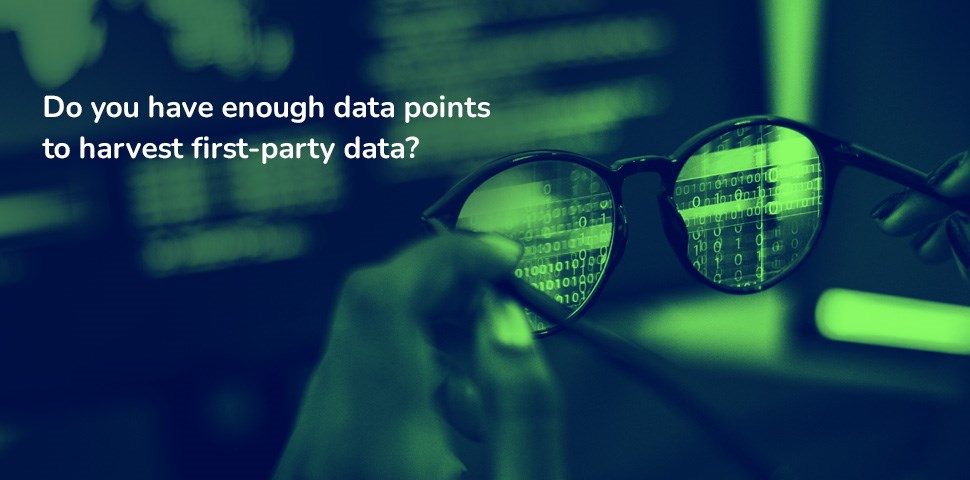Whether you leave a glass of milk for Father Christmas or a can of Castle, in the next couple of years, cookies will definitely be a thing of the past. Not because Santa has developed Type 2 diabetes, but due to the demise of third-party cookies. Cookies (the sweet kind) might be an effective way to get on Santa’s good side after he’s climbed over the palisade fence, but the future is, in fact, cookieless.
If you haven’t yet implemented a digital marketing strategy without cookies of the third-party kind, we understand. Like Eskom and Koeberg, Google keeps delaying decommissioning third-party cookies (the last we checked, they will be phased out of Chrome in the second half of 2024). However, businesses and digital marketers should already be using substitutes to track data so they’re not caught with their pants down.

Why should you care about cookies?
If you’re a digital marketing decision-maker and believe that people are over data privacy, you’re wrong. Sure, we all click ‘accept’ when faced with annoying website permissions pop-ups, but digital natives (that’s Gen Z) are extremely private with their data. This is partly because they’re more likely to use contactless payments and cryptocurrencies, but it might also be because they’ve grown up in a digital world (and they’re tired of their parents posting their baby photos all over Facebook).
While Boomers and Millennials may not be as concerned about data privacy, Gen Z is, quite literally, the future – and they want privacy, personalisation, brands with purpose, and seamless digital platform functionality. We didn’t say it would be easy, but, a digital marketing strategy must take a lack of third-party cookies into account, no matter the customer or industry segment you’re targeting.
Plus, with third-party cookies phased out, it’ll be harder to target segments and even identify them properly in the first place. Google is now proposing a Topics API, which, when installed on a website, analyses an anonymous user’s browsing history. The API then assigns the user to a category to deduce their interests. Currently, the topics are limited to 350, and the interests are broad.
As digital marketers and agencies, all of this means we need to up our game. Many people already use browsers like Safari and Firefox that automatically block third-party cookies, but with Chrome holding 63 percent of the global browser market, an internet experience without third-party cookies is not yet the default. It will be, however, and, like Santa and his reindeer on a balmy Jo’burg Christmas Eve, you need to be ready to jump over razor spikes and sneak past armed response.

Audit your assets; focus on first-party data
Being ready means leveraging data that you already have, but you need to know what you’re looking for, where to look, and how to use it.
First-party data can be mined from a company’s digital assets, like a website, email interactions, app behaviour, purchase history, and more. A business owns that data, and it gives valuable insight into actual customer interactions across touchpoints. The right digital partner will be able to strategically position a brand to leverage the data at hand. The beautiful thing is that almost all brands already have that data, whether they realise it or not – and it can be used to create personalised ads, content, or experiences.
While third-party data can help with acquisition, it doesn’t provide this level of insight and reliability; in fact, first-party data generates the highest ROI of any data type. However, many businesses and digital marketers don’t have the right data strategy to fully leverage its potential to better understand their customers and behaviour.

Be proactive and get a competitive edge, now
Remember, you don’t own your client’s Facebook fans or Instagram followers – but a business owns its mailing list database, website analytics, and e-commerce purchasing profiles, to name a few. A life without third-party cookies also means businesses must leverage pre-existing audiences to target them more effectively and break into new markets. For example, you can use first-party data to target a new audience similar to your current customers, such as site visitors, email subscribers, demographics, geolocation, and social media followers.
Plus, don’t forget that the minute someone completes a form on a website or clicks a link on a mailer they de-anonymise themselves. If you have the tools in place, you can see who repeat visitors are and then build automation to contact them.
The digital marketing landscape will be different once third-party cookies are killed off, but specialists can devise strategies that rely on first-party data instead of third. So, be proactive and get a competitive edge now. Is everything set up how it should be, and do you have enough data points to harvest first-party data?
The truth is technology constantly changes and, as marketers, we adapt. We may stop believing in Santa and down the Castle once the kids have put up their stockings and gone to sleep, but we suspect the reindeers’ noses can now detect garden beams...
Not sure how to position your digital marketing in a cookieless world? Contact us; we can show you where the opportunities are.




